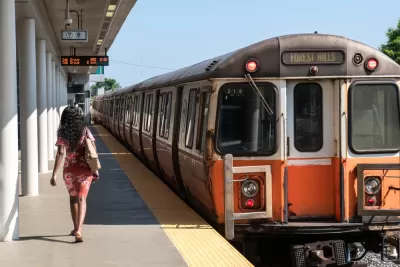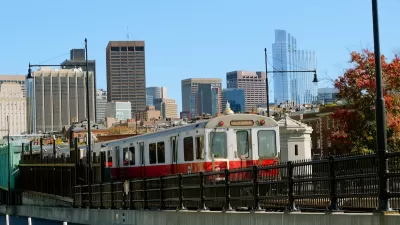Cities, residents, and developers have a renewed interest in building more housing near transit stations—when they actually provide safe, reliable transit.

An article by Yvonne Abraham in the Boston Globe questions whether the beleaguered Massachusetts Bay Transportation Authority (MBTA) can fix the region’s transit system before developers and residents lose interest in transit-oriented development (TOD), which ostensibly puts people closer to reliable transportation, jobs, and urban amenities, even as developers around the country embrace TOD (often nudged by government incentives to do so).
“In the 1920s, 91 percent of apartment and condo development in Greater Boston took place within a 10-minute walk of a subway, streetcar, or commuter rail stop, according to data from real estate and transportation consulting firm Respoke LLC.” After falling to 16 percent at the height of autocentric development, today, close to 60 percent of multifamily development in the Boston area is now within a 10-minute walk of transit. But do the MBTA’s consistent service disruptions and shutdowns threaten to devalue transit-oriented development?
Not likely, the article concludes. Abraham points out that much of Boston’s growing economy relies on life sciences and other industries dependent on in-person work. Housing and transit advocates are hopeful that the long-delayed repairs will make the T more effective and safe, and developers continue to invest in properties near transit stations. “It may be annoying today, but the Orange Line shutdown might make Boston a better place to live after decades of neglected repair.” But if that doesn't happen quickly, more residents will be forced back into personal vehicles.
FULL STORY: Could it be the end of the line for transit-based development?

Alabama: Trump Terminates Settlements for Black Communities Harmed By Raw Sewage
Trump deemed the landmark civil rights agreement “illegal DEI and environmental justice policy.”

Planetizen Federal Action Tracker
A weekly monitor of how Trump’s orders and actions are impacting planners and planning in America.

The 120 Year Old Tiny Home Villages That Sheltered San Francisco’s Earthquake Refugees
More than a century ago, San Francisco mobilized to house thousands of residents displaced by the 1906 earthquake. Could their strategy offer a model for the present?

Opinion: California’s SB 79 Would Improve Housing Affordability and Transit Access
A proposed bill would legalize transit-oriented development statewide.

Record Temperatures Prompt Push for Environmental Justice Bills
Nevada legislators are proposing laws that would mandate heat mitigation measures to protect residents from the impacts of extreme heat.

Downtown Pittsburgh Set to Gain 1,300 New Housing Units
Pittsburgh’s office buildings, many of which date back to the early 20th century, are prime candidates for conversion to housing.
Urban Design for Planners 1: Software Tools
This six-course series explores essential urban design concepts using open source software and equips planners with the tools they need to participate fully in the urban design process.
Planning for Universal Design
Learn the tools for implementing Universal Design in planning regulations.
Clanton & Associates, Inc.
Jessamine County Fiscal Court
Institute for Housing and Urban Development Studies (IHS)
City of Grandview
Harvard GSD Executive Education
Toledo-Lucas County Plan Commissions
Salt Lake City
NYU Wagner Graduate School of Public Service





























